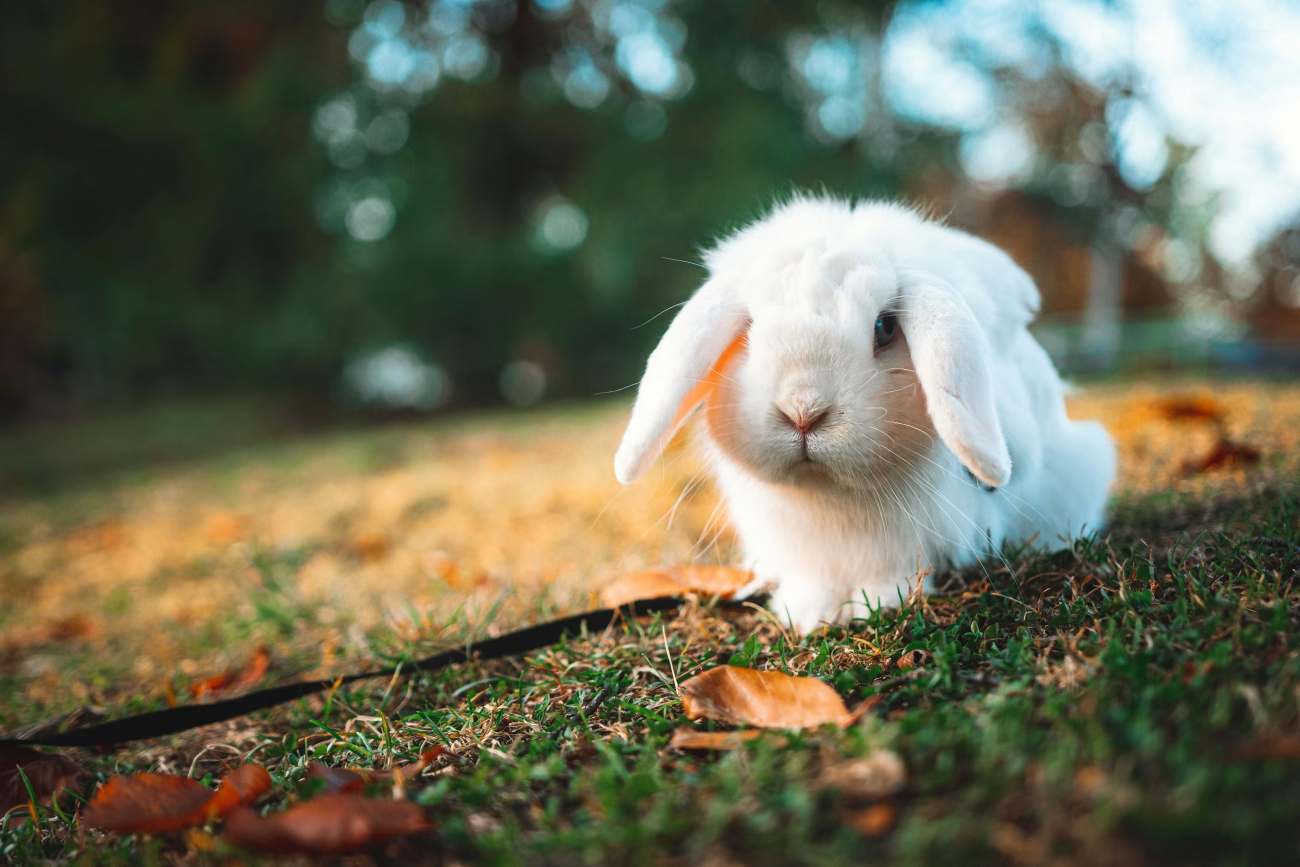At first glance, rabbits may not seem all that complex. They hop, they nibble, they nap. But behind those soft eyes and twitchy noses lies a world of instinct, a wild one.
For most rabbits living in homes, playtime looks like tossing around a chew toy or circling under a chair. It’s cute, sure. But it often misses something deeper: instinct.
What if we stopped entertaining rabbits like pets and started engaging them like wild animals? What if, instead of just giving them toys, we gave them reasons to dig, forage, hide, and chase. Just like their ancestors did in open fields and underground warrens? Let’s take a look at how to spark real, natural play in rabbits by tapping into the behaviors they were born with.
Born to Burrow: The Joy of Digging
In the wild, rabbits dig to build homes, escape predators, and find cool earth to rest in. It’s not just utility. It’s joy. Digging is a calming, purposeful behavior.
Many indoor rabbits are denied this experience entirely. A flat floor with no texture doesn’t say “dig here.” But you can offer that experience at home with just a few adjustments. Try filling a shallow box with shredded paper, soil, or untreated hay. Let your rabbit dig without consequence. It’s messy.Yes, but it’s also medicine for their mind. You’ll know it’s working when their whole body relaxes into the movement.
For outdoor rabbits, secure digging spaces with deep earth and shaded fencing can allow them to express this instinct in a safe, supervised environment. This can also reduce destructive chewing indoors, as the rabbit finds its natural outlet.
The Forager’s Brain
Rabbits in the wild spend much of their day foraging. Not hunting, like predators, but constantly searching, selecting, testing textures, and sensing safety. When we place food in the same bowl every day, we take all of that away. Predictability is easy, and also… boring.
Instead, scatter small portions of greens or pellets across a clean rug. Tuck bits of carrot into cardboard tubes. Hide leafy treats under hay. Let your rabbit sniff, paw, dig, and decide. This enrichment brings your rabbit into the present moment, activates their mind, and satisfies that invisible itch to explore.
For more guidance on natural foraging behaviors, check out RWAF’s rabbit foraging advice.
You can also rotate feeding locations to simulate a dynamic environment. Over time, your rabbit learns to search and adapt, which not only reduces boredom but also mimics the decision-making behaviors wild rabbits use daily.
The Importance of Height, Space, and Shadow
Yes, they can be solitary. But rabbits are social creatures at heart. In the wild, they play with each other (chasing, nudging, grooming…). That’s why bonded pairs or trios tend to live longer, calmer lives.
If you can safely bond your rabbit with another, that’s ideal. But even if you can’t, you can still mimic social stimulation. Sit with them. Let them circle your feet. Offer head rubs. Mirror their movements with your hands. And above all respond. When they approach, acknowledge. When they nudge, pause. When they do that silly sideways binky mid-run? Smile and show you noticed.
Introducing new but safe experiences, such as gentle exposure to new textures or even rabbit-safe music can also create positive stimulation. It keeps their world fresh, yet secure.
Learn more about rabbit body language and social bonding from the RSPCA’s behavior guide.
The Art of the Binky: Why Real Play Matters
A binky (the midair twist rabbits do when truly happy) is a biological expression of safety and joy. Rabbits don’t binky when they’re scared, bored, or understimulated. That’s why wild-inspired play matters. Not for our entertainment, but for theirs. It reminds us that behind every tame rabbit is a wild spirit, waiting to dig, dart, and leap. It’s our job to make sure they get the chance.
You’ll start noticing other behaviors too: relaxed grooming, full-body stretches, or even flopping onto their side. These are the silent signs of a rabbit that feels seen, safe, and satisfied.
Play Means Safety, Joy, and Connection
Too often, play is treated like a bonus, a thing we add on if there’s time. But for rabbits, play is how they process the world. It’s how they communicate safety, build confidence, and release energy. And when we give them outlets for their wildness, when we enrich instead of just contain, we don’t just raise happier rabbits. We form real connection. It’s about giving them back a piece of who they are.
What may look simple to us (sniffing a pile of hay or darting into a cardboard tunnel) is actually a return to something ancient. Something instinctual. Something joyful.
Inside every bunny is a creature of the earth, the grass, and the quiet language of play.


